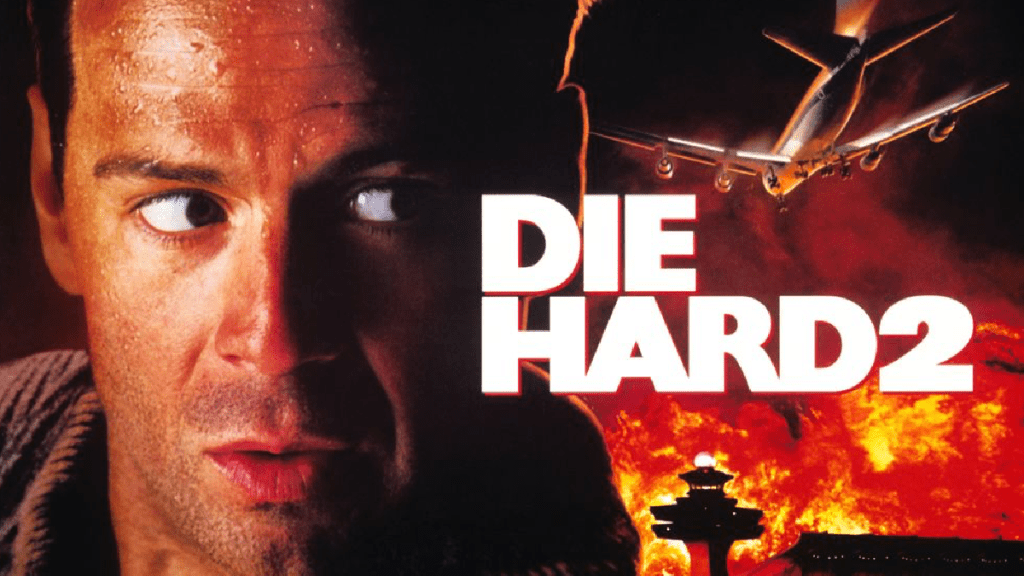In Renny Harlin‘s thrilling Die Hard 2: Die Harder, it’s clear that everyone involved knew the assignment: produce a rip-roaring, crowd-pleasing sequel to John McTiernan’s Die Hard. Don’t overthink it. Just ensure every action scene pops, and the stakes are higher. Bruce Willis will do the rest.
Die Hard 2 doesn’t best the original, but it’s not trying to. Writers Steve E. de Souza, Doug Richardson, and Walter Wager slap together a rail-thin plot about an AWOL Colonel (William Sadler) holding an airport hostage to free a dangerous South American dictator. The highly decorated (and recognizable) Colonel’s actions are never fully explained, nor do they need to be. All we need to know is A) danger is afoot, and B) John McClane (Willis) must save the day. Capiche?
Indeed, it takes all of 10 minutes for the first shootout to occur. (Comparatively, McTiernan afforded his film 20 minutes of buildup before bringing out the big guns.) Once Die Hard 2 gets cracking, it’s like the first film never ended.
Things happen so fast that you don’t have time to question whether any of it makes sense. Why would the airport’s Chief of Police, Carmine Lorenzo (Dennis Franz), dismiss a shootout between McClane and Colonel Stuart’s men? Why would he not alert the Chief of Air Operations (Fred Thompson) of a possible threat? How could an entire Army Special Forces platoon willingly turn against their own country or fail to question Colonel Stuart’s resolve, especially after he destroys a fully booked commercial airliner? Undoubtedly, at least ethically speaking, one of the men must’ve felt a little iffy about that particular action.
But Harlin doesn’t slow down long enough for the audience to linger on such details. He hits the ground running, only pausing for a few expository beats to establish the next set piece—and away we go!
I’ve seen Die Hard 2 a handful of times, mostly on TV as a kid. The sequel may not top its predecessor, but it’s hardly a run-of-the-mill production. Each set piece is meticulously designed, including the bit where McClane — stuck in a plane — must use an ejector seat to evade a half dozen grenades before they explode:
Is it hyperbole to call that shot iconic? I love the birds-eye angle and how McClane flies towards the camera long enough for us to note his exasperated reaction. The look of bewilderment on the villains’ faces after they spot McClane’s parachute says it all: how did we f— that up?
Sure, the sequence is beyond ridiculous. Grenades don’t often provide more than a few seconds before detonation. Yet, this is McClane’s MO. He’s luck’s favorite dance partner, outshining mere skills. Improvisation and his unmatched ability to think quickly in a tight spot are the key:
Each goon exhibits genuine frustration at being unable to hit a middle-aged man as he slowly rolls across an open space. The film leans into this character trait and uses it as a running gag. “Lucky f—,” a henchman declares after another of McClane’s patented narrow escapes.
Even when McClane loses, such as during his one-on-one against Stuart aboard a moving plane in the climax, he still gains the upper hand with little more than jet fuel and one of those trusty lighters all 80s action heroes carried.
Compared to other Die Hard knock-offs, it’s fair to say Die Hard 2 does it best. Well, second best after Die Hard with a Vengeance.
Surprisingly, Willis was vocal about his disdain for the sequel: “The second was my least favorite and the least fun. Far too self-referentially precious, the story was all over the place and suffered from severe un-claustrophobic-ness.”
Fair enough, but the lack of claustrophobic thrills doesn’t make Die Hard 2 any less entertaining. Despite what other media pundits will say, there’s no blueprint for the perfect Die Hard movie, and kudos to Harlin’s crew for at least trying to up the ante rather than repeat the same scenario as before. The airport gives McClane more freedom to roam around. We see him in the real world, talking with regular folk, and learn he’s as handy with an icicle as a submachine gun.
This setting allows Harlin to get creative, resulting in the thrilling snowmobile chase:
I should also point out that Die Hard 2 is a Christmas movie, just like its predecessor. Somehow, we never talk about this one. Surprising, given that most critics, including Roger Ebert, gave it a thumbs up. Audiences shelled out $240 million worth of tickets, besting the original’s $143M haul, and turned up in droves to see Die Hard with a Vengeance five years later. Yes, I completely understand all the negative feedback. Die Hard 2 is derivative and lacks the freshness that made the original an instant classic.
Yet, despite its flaws, Harlin’s sequel delivers where it counts. Die Hard 2 remains an absurdly entertaining piece of escapism that more than lives up to its name.










